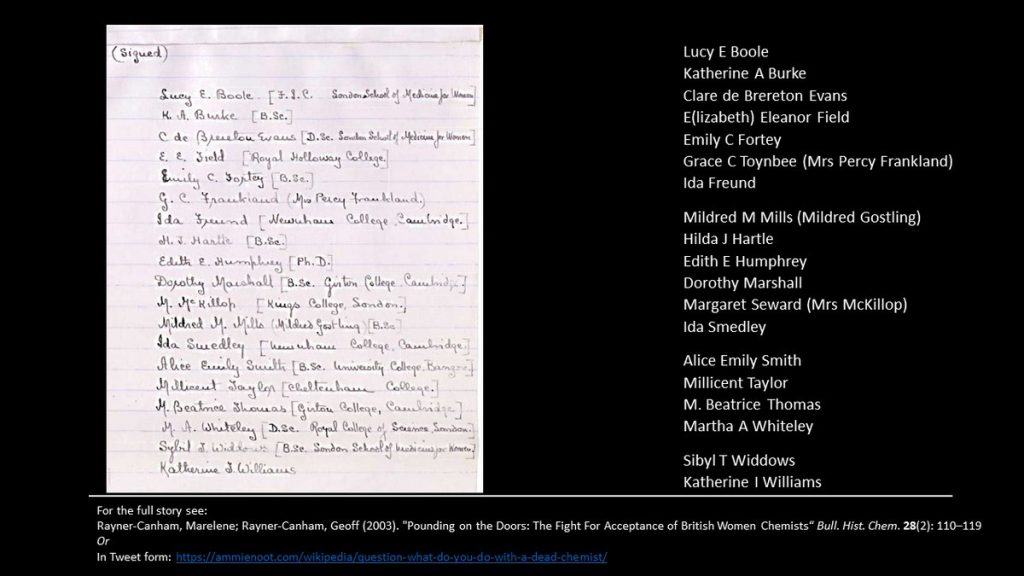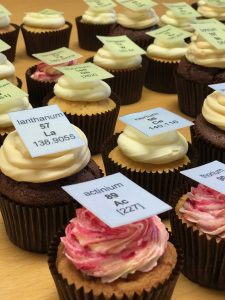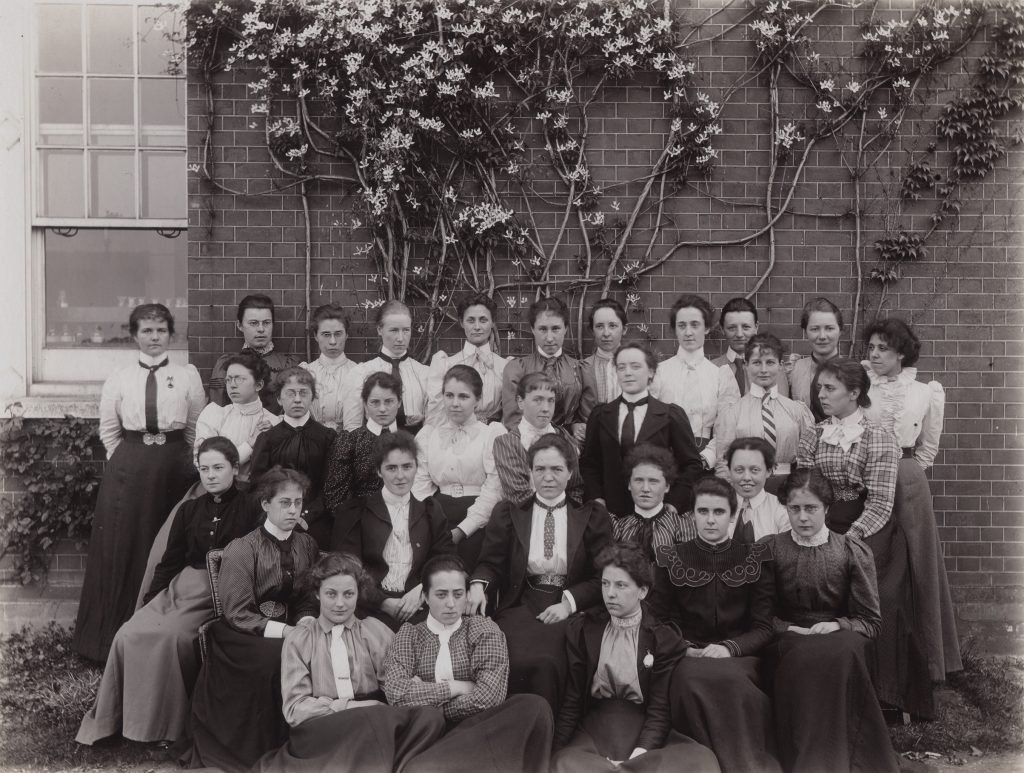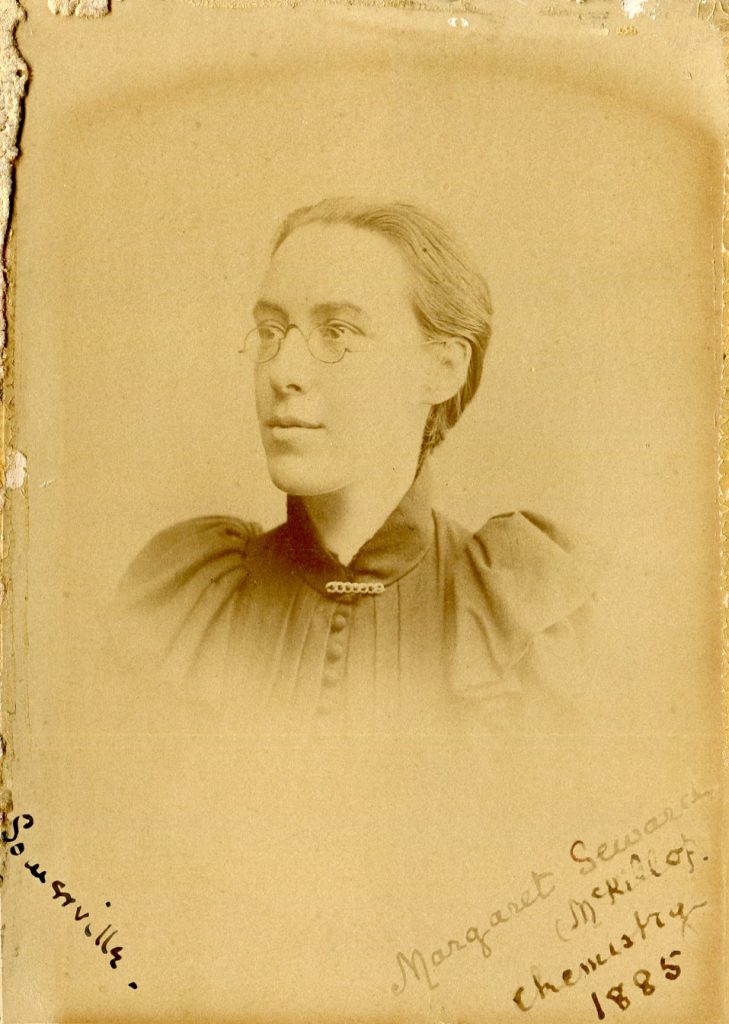Last week, we marked Ada Lovelace Day at the University of Edinburgh with a full day event at King’s Buildings, the University’s Science and Engineering campus.

Fun Science & Tech activities at Ada Lovelace Day 2017 (CC-BY,Interactive Content Team, University of Edinburgh)
The event was our biggest and best attended yet with talks and activities in the morning, a Women in STEM Wikipedia editing event in the afternoon, and a film screening of the short documentary film, A Chemical Imbalance, in the evening. (recommended viewing).

The day finished with a panel chaired by the ever-awesome Anne-Marie Scott and comprising three brilliant panelists: Professor Polly Arnold, Professor Jane Norman and Dr. Carole Morrison. The panel discussion focused on the issues raised by the film; namely the low participation of women in STEM fields and what could be done to change this… with surfacing more women in STEM role models as one suggestion. You can see pics from the day and a Storify telling the story of the day.

Assistant Principal Melissa Highton welcoming attendees to Ada Lovelace Day 2017 (CC-BY, Interactive Content team, University of Edinburgh)
The collaboration with the School of Chemistry this year came about because it was suggested I should meet Dr. Michael Seery, Reader in Chemistry Education, on a completely different subject; his work with digital badges. During the tail end of the conversation, Michael expressed a certain scepticism about Wikipedia being used in academic contexts and I took the opportunity (and great delight) in proving him wrong… or at least in providing him with what I saw as a more informed approach to Wikipedia’s role in the creation, curation and dissemination of knowledge globally.
I can’t be sure what it was during that brief exchange that prompted Michael to start his own investigations yet investigate he did. And it resulted in his epic Twitter rant and this blog post re-appraising Wikipedia’s role in chemistry education*.
After our meeting and discussions, it was as a process of writing his first Wikipedia article on the English chemist Mildred May Gostling, and seeing the work involved, that he began to move “closer to the light“. (His words not mine). The fact that Michael was able to move from sceptic to activist and teach himself how to create such a page within the space of an evening should evidence how much easier editing Wikipedia has become in the last 2-3 years with the new Visual Editor interface making it possible to pick up the basics of Wikipedia editing in as little as 25 minutes.
*NB: Before I get carried away and completely misrepresent Michael, this was no Road to Damascus volte-face on his part. I prefer to think of it as a rational educator responding to rational arguments; making connections between the work he does and the work of the Wikimedia community. For the record, a certain amount of (healthy) scepticism is fine. An unhealthy quasi-prejudiced scepticism is a whole other kettle of fish. In any case, I’ll always make the case that an informed approach to engaging with Wikipedia trumps pretending it doesn’t exist each and every time.

Scan of 1904 petition presented during Michael Seery’s talk at Ada Lovelace Day 2017. (CC-BY-SA via Michael Seery)
It was Michael who brought the Letter of 19 to my attention. I confess I had not heard of the nineteen British women chemists who petitioned the Chemical Society in 1904 to afford women the same basic rights of Fellowship as their male counterparts. Shamefully, only a handful of the nineteen were represented on Wikipedia this Summer, the world’s number one information site. Hence, if providing more Women in STEM role models helps show that STEM careers are not just viable but something to be emulated then ensuring these fabulously notable women & their achievements were represented on Wikipedia had to be the #1 focus for our editing event for Ada Lovelace Day. (And it didn’t hurt that one of the 19, Ida Freund, had invented the Periodic Table of cupcakes as a teaching tool… which over a hundred years later would help inspire & fuel our editors while they worked).

Periodic Table cupcakes – invented by Ida Freund and supplied by tasty Buns bakery for Ada Lovelace Day 2017.
Happily, as a result of last week’s cupcake-fuelled editathon event, ALL nineteen of the signatories to the petition are now represented on Wikipedia. In addition, we also now have a brand new article about the 1904 petition itself where you can access all of the nineteen biographies.
The signatories to the 1904 Petition are:
- Lucy Boole
- Katherine Alice Burke
- Clare de Brereton Evans
- Elizabeth Eleanor Field
- Emily Fortey
- Ida Freund
- Mildred Gostling (Mrs Mills)
- Hilda Hartle
- Edith Humphrey
- Dorothy Marshall
- Margaret Seward (Mrs McKillop)
- Ida Smedley (Mrs Maclean)
- Alice Emily Smith
- Millicent Taylor
- M. Beatrice Thomas
- Grace Toynbee (Mrs Frankland)
- Martha Whiteley
- Sibyl Widdows
- Katherine Isabella Williams

Wikipedia, CC-BY-SA 3.0 Unported, The Wikimedia Foundation
Wikipedia is a concept that shouldn’t work when you think about it.
A free online encyclopaedia that anyone can edit, crowd-sourced from volunteers. Yet work it does, miraculously so. It’s always been predicated on the notion that more people want to good than harm. And this is borne out by my own experience of editors and, perhaps more importantly, by research which found that only 7% of edits can be considered vandalism; meaning 93% is well-intentioned.
The 5th most popular website in the world receives 17 billion pageviews a month and 7,000 new articles are created each day. A recent article by WikiProject Medicine (recommended reading) found that Wikipedia is a source of health information for half to nearly three-quarters of physicians and more than 90% of medical students. It is also estimated to be 1,500 times more cost-effective than traditional ways of spreading information such as presenting at academic conferences. With recent analysis showing that people spend more time on Wikipedia’s mobile site than any other news or information site, issues of inaccuracy or under-representation matter.
But they can only be solved by greater engagement. Of the 80,000 regular contributors to Wikipedia, only 3,000 are considered ‘very active’ – meaning a community the size of the village of Kinghorn in Fife is often left to curate the world’s knowledge. Having more eyes on articles improves those articles immeasurably. That’s why it is so important to address areas of under-representation, to involve subject specialists, and to share the (often pay-walled) knowledge universities possess. Only then can Wikipedia begin to get anywhere close to truly being the sum of all human knowledge.
And people do respond to this call-to-arms. Correcting systemic bias and areas of under-representation has motivated many to help create and improve articles since the Edinburgh residency began in January 2016. I am convinced it also motivated Michael Seery to contribute and his advocacy, in turn, helped bring in many others within the School of Chemistry.

Women in Red meetups at the University of Edinburgh (Own work with openly licensed images sourced from Wikimedia Commons, CC-BY-SA)
More generally, the lack of female Wikipedia editors is a clear & ongoing concern – with numbers routinely under 15% this skews the content on Wikipedia in much the same way. Two years ago, the number of biographies on Wikipedia about notable women was roughly 15% too. Thankfully, there are editors all around the world determined to address this. WikiProject Women in Red is the second most active WikiProject on Wikipedia (out of some 2000+ WikiProjects) and its editors are motivated to turn red-linked articles about notable women which don’t yet exist into blue clickable links which do. As such they have been hugely successful in helping correct this systemic bias and the number of female biographies has shifted; currently standing at 17.12%. So moving in the right direction but still a long way to go to achieving gender parity.
Issues of fairness and representation are felt keenly. Changing the way stories are told matters. That’s why it is so amazing to see people engage with Wikipedia; to see articles like the 1904 petition be created; to see new role models be uncovered and (hopefully) inspire new generations. 65% of our editathon attendees last year were women and, while I haven’t totted up the latest figures, I can tell you that this trend has not changed one iota this year.
That’s why it is also so gratifying when very un-Wikipedia comments are left on Talk pages thanking our editors for creating these pages, as recently happened to Anne-Marie following her creating a page for the Bletchley codebreaker Ann Katharine Mitchell at Ada Lovelace Day in 2016.
“Hello, this isn’t a very Wikipedian comment but I just wanted to thank you personally for creating an entry for my mother Ann Katharine Mitchell. She is in residential care with Alzheimers, serene and contented, and largely lives in the past. She was told recently that she had a Wikipedia entry and was flattered and delighted to see it (I’ve now made some revisions). It isn’t the purpose of your editing to give the subjects pleasure, of course, but thanks for doing so!”
Michael himself created articles for two of the 19 including the British chemist, Margaret Seward. This article was first drafted by a participant (User:ActuallyDutch14) at a Royal Society of Chemistry event this Summer but, as sometimes happens, never finished. After writing the 1904 petition article, Michael simply took the half-finished article on Margaret Seward and helped complete it using information provided in an excellent source identified by Alice White, Wikimedian in Residence at the Wellcome Library, and ordered into the University of Edinburgh’s Murray Library by Rowena Stewart, Academic Support Librarian: ‘Chemistry was Their Life: Pioneer British Women Chemists, 1880–1949’ by Marelene Rayner-Canham and Geoff Rayner-Canham.
To do my bit, I reached out to the various universities these 19 brilliant women chemists were working at around the turn of the century including: Royal Holloway College; Bangor University; Bristol University; University of Manchester; Girton College and Newnham College in Cambridge; the University of Zurich; University College London; and Somerville College in Oxford. So far, I have been extremely impressed by the responses I have received in helping illustrate these new pages with images provided from their archives.
We already have a picture supplied by Royal Holloway Archives of Mildred May Gostling’s study and Royal Holloway are also looking to provide the group image of Elizabeth Eleanor Field at the School of Chemistry (below). Somerville College in Oxford have today provided a first class image of Margaret Seward taken in 1885 when she must have been 21 years old. Wikipedia articles with images are at least 20-30% more likely to be read but somehow an image on a biography article, like Seward’s, can also make that person come to life and seem that little bit more real.

RHC PH.205.11 Chemistry staff and students c.1899
Elizabeth Eleanor Field appears in 3rd row down, 3rd one across from left. Picture from Royal Holloway Archives, CC-BY-SA)
Many institutions will often try to sell such images in their collections as revenue generation is such an ingrained, and persuasive, model. Yet it is not the only model and it is not only reason to share images. Sharing images, even low resolution images, for the rest of the world to engage and learn about a person or subject is, more often than not, hugely rewarding in of itself. Especially with the global reach that Wikipedia delivers.

Margaret Seward, chemist. Taken at Somerville College, Oxford in 1885. CC-BY-SA, Somerville College Archives via Wikimedia Commons.
Looking at the newly uploaded picture of Margaret Seward generously shared on her Wikipedia page, which itself didn’t exist until a week ago, and thinking of all the people involved in the article’s creation who gave of themselves to tell her story over a hundred years later, it really does make me marvel both at Margaret’s life & achievements AND the kindness of strangers in bringing her story to the world’s attention.
Postscript:
I recently wrote 3 articles of the 19 petitioners and was struck both by my increasingly difficulty to find sources and by the following passage from ‘Chemistry was their life’:
“Of the early women research workers in traditional areas of chemistry the three most productive in the period before 1905 were Aston and Micklethwait at University College, London, and Fortey at University College, Bristol. None of these, or indeed any of the slightly later and notably productive women chemists such as Marsden, Renouf, Alice Emily Smith or Isaac, produced a substantial body of independent work. Most of their publications are joint with eminent male co-authors, and almost the only records of their research careers are those co-authored papers in the technical journals. They appear, therefore, in the role of assistants rather than partners. Micklethwait, the most outstanding in terms of number of co-authored publications, was described by her obituarist as being ‘of a modest and retiring disposition’, which ‘was reflected in her preference for working in collaboration rather than striking out on lines of her own’.
Their records of joint publications would seem to suggest that, generally speaking compared with the women biochemists, most of the women researchers in established areas of chemistry were of a similar ‘modest and retiring disposition’ – a curious coincidence….
Both Freund and Thomas, two other life-long professional academics in traditional areas chemistry, are remembered as teachers rather than as researchers: Thomas’s original work was all collaborative, and Freund’s most important publication was her classic textbook. Thus, for the most part, British women of this period who were interested in doing research in the chemical sciences at anything beyond the assistant level generally found their opportunities in areas other than the established branches of the field. A similar pattern has been noted in the careers of American women chemists of the turn of the century…
The difficulties encountered by women chemists in establishing themselves as independent workers and being recognized as such are emphasized further by comparisons with fields other than biochemistry. In geology, for instance, a discipline in which in Britain during the late nineteenth century there were less than half as many women active in research as in chemistry, several women made major independent contributions, which were recognized by the Geological Society by the award of notable honours (not-withstanding the fact that women were not accepted as Fellows of the Society until 1919).
…..It is also the case that of these seven prominent women scientists only four held salaried positions…. Ogilvie Gordon, Donald and Sargant were independent research workers, living on family funds in a manner more typical of the ‘amateur’ male scientists of an earlier era, and not competing for salaried positions despite life-long commitments to first class scientific work.
Despite professional recognition by their peers and notable honours, these scientists, the ablest of the women researchers in their fields, were on the very margins of the scientific community as far as consideration for such positions was concerned. Nevertheless, they and the women biochemists whose careers are outlined above did achieve success as independent researchers. Corresponding success and recognition by the established chemical community for women in traditional areas of chemistry is hard to find.”
The context in which these women made these achievements makes them all the more remarkable.

‘Chemistry was their life’ by Marelene Rayner-Canham and Geoff Rayner-Canham. Pic taken by Michael Seery, CC-BY-SA.

